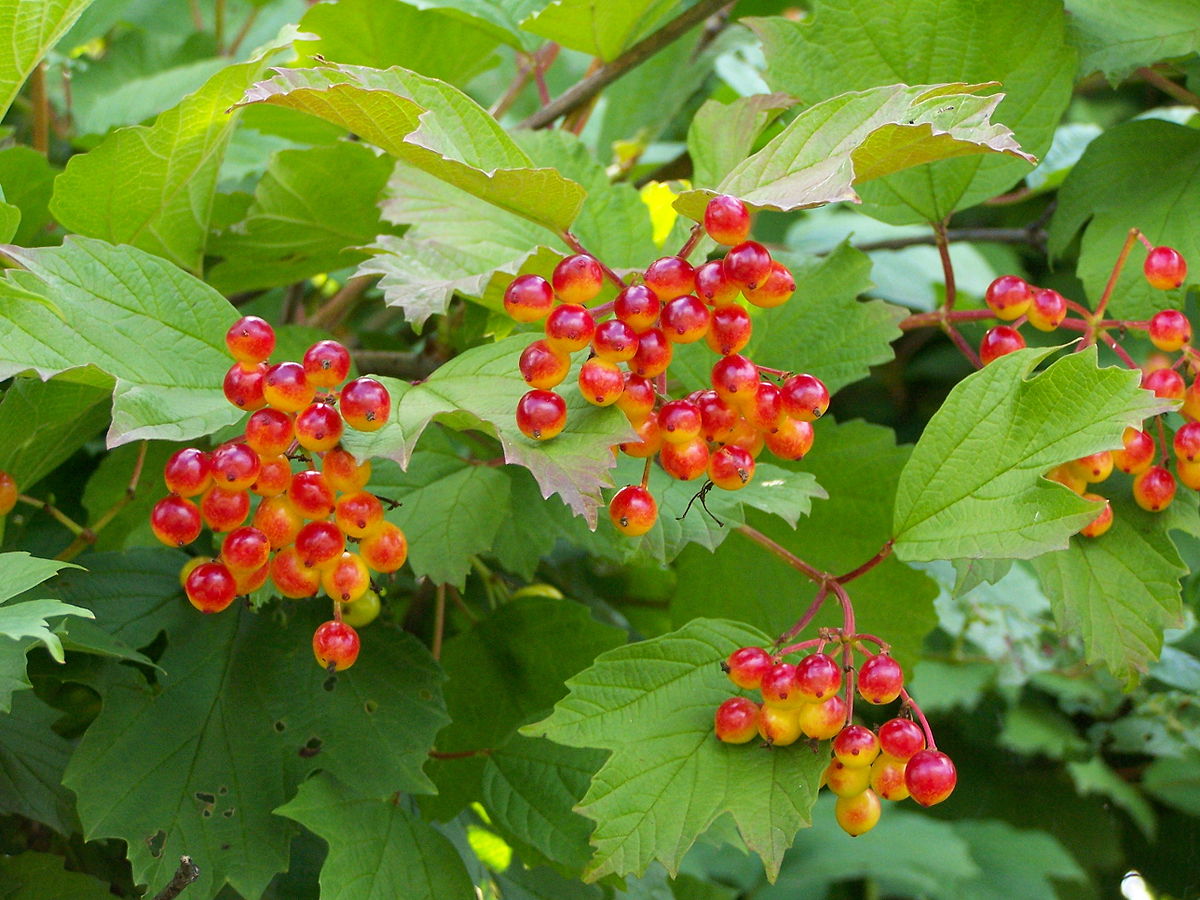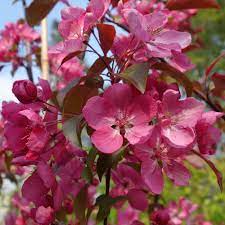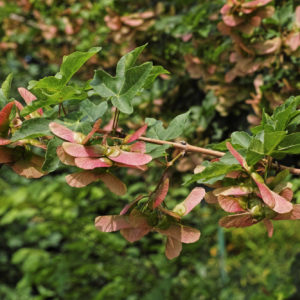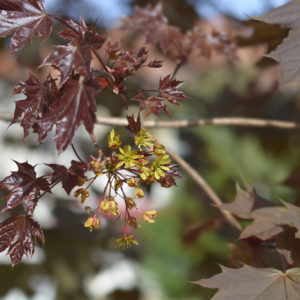Viburnum opulus
€325.00
Large, lacecap-like, white flowers from late spring to early summer, followed by bunches of small, bright red fruit
Frequently Bought Together
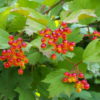


Description
Quick Facts
- Common Name: Guelder Rose, European Cranberrybush, Water Elder
- Botanical Name: Viburnum opulus
- Plant Type: Deciduous shrub
- Mature Height: 3-4m
- Mature Spread: 3-4m
- Flowering Period: May to June
- Flower Colour: White lacecap flowers
- Foliage: Maple-like lobed leaves, bright green turning red-purple in autumn
- Hardiness: RHS H7 (very hardy)
- Soil Requirements: Moist, well-drained, tolerates most soil types including heavy clay
- Aspect: Full sun to partial shade
- Maintenance: Low
Description
Experience the enchanting beauty of Viburnum opulus, our stunning native Guelder Rose that brings exceptional multi-season interest, outstanding wildlife value, and spectacular autumn colour to your garden with its lacecap flowers, translucent berries, and vibrant foliage. This outstanding native shrub offers remarkable year-round benefits—exquisite white lacecap flower clusters in late spring resembling delicate lace doilies floating above the foliage, spectacular translucent red berries in autumn that glow like jewels when backlit, stunning maple-like foliage that transforms from fresh green to brilliant shades of red, burgundy, and purple in autumn, and exceptional wildlife value providing nectar for pollinators and vital autumn and winter food for thrushes, blackbirds, and waxwings, making this one of the most beautiful and ecologically valuable native shrubs for Irish gardens, hedgerows, and naturalistic plantings.
Throughout late spring and early summer, this captivating shrub becomes adorned with exquisite flat-topped flower clusters measuring 5-8cm across, each displaying the characteristic lacecap form—a ring of showy white sterile flowers surrounding a cluster of tiny fertile creamy-white flowers in the centre, creating an elegant lace-like effect. The flowers attract countless pollinators including bees, hoverflies, and butterflies. The bright green maple-like leaves measuring 5-10cm across with 3-5 lobes create attractive texture throughout summer. By late summer and autumn, the flowers transform into spectacular drooping clusters of translucent berries that ripen from green through amber to brilliant glossy red, creating stunning visual impact and providing vital food for birds. The berries persist into winter if not eaten. In autumn, the foliage puts on a spectacular show, transforming into brilliant shades of red, burgundy, wine-purple, and orange—one of the finest autumn displays of any native shrub.
Native to Ireland, Britain, and across Europe, this remarkable shrub grows naturally in hedgerows, woodland edges, and damp areas, thriving in our cool, moist climate. The name ‘Guelder Rose’ is thought to derive from the Dutch province of Gelderland, though it’s not a true rose. The name ‘opulus’ refers to a type of maple, reflecting the maple-like foliage. Exceptionally hardy and adaptable, Guelder Rose thrives in Irish conditions, tolerating heavy clay soils, damp sites, moderate shade, and exposure whilst providing unmatched wildlife value—supporting over 20 species of invertebrates and providing crucial autumn and winter food for migrant thrushes and waxwings. The berries are mildly toxic to humans when raw but have been used traditionally for preserves after cooking.
Create stunning compositions by planting in naturalistic woodland gardens, wildlife gardens, or native hedgerows where the multi-season interest and wildlife value can be fully appreciated. Magnificent in mixed borders, informal hedging, or beside water features where the damp-tolerant nature thrives. Works beautifully combined with other native shrubs like hazel, blackthorn, and elder, or with moisture-loving perennials like astilbes, hostas, and ferns. Exceptional for autumn interest gardens where the spectacular foliage colour and glowing berries create stunning displays.
Caragh Garden Notebook
Planting: Space plants 2.5-3m apart for informal hedging, or allow 3-4m for specimen placement. Plant bare-root specimens from November to March, or container-grown plants year-round (autumn or early spring is ideal). Dig holes twice the width of the root ball and incorporate generous amounts of organic matter, especially in drier soils. Plant at the same depth as the nursery soil mark. Water thoroughly and mulch generously around the base. Thrives in damp sites and beside water features.
Soil Preparation: Thrives in moist, well-drained soil with pH 5.5-8.0. Tolerates a wide range of soil types including heavy clay, loam, and chalk. Prefers moisture-retentive, fertile conditions but adapts to drier sites once established, though performs best with consistent moisture. Particularly well-suited to damp sites and heavier soils where many shrubs struggle. Incorporate well-rotted compost or manure to improve soil structure and moisture retention. Tolerates both full sun and partial shade—best berry and autumn colour in sun.
Container Growing: Can be grown in large containers (minimum 60cm diameter) using soil-based compost for several years. Water regularly and consistently—never allow to dry out completely. Feed in spring with slow-release balanced fertiliser. However, for best long-term health, abundant flowering, spectacular berry display, and brilliant autumn colour, plant out into the ground where the root system can access consistent moisture.
Seasonal Care: Requires minimal pruning—the naturally rounded form develops without intervention. Remove only dead, damaged, or crossing branches in late winter or early spring. If renovation is needed, can be cut back hard in early spring and will regenerate vigorously. Avoid heavy pruning as this removes flowering wood and reduces berry display. Apply slow-release balanced fertiliser in early spring if desired, though generally thrives without supplementary feeding. Mulch annually with organic matter to retain moisture. Water during dry spells, especially when young or in drier sites.
Propagation: Propagates readily from semi-hardwood cuttings taken in summer—insert into gritty compost and keep moist. Can also be propagated from hardwood cuttings in winter. Seed propagation is possible but requires patience—collect ripe berries in autumn, remove flesh, stratify seeds over winter, and sow in spring. Germination can take 18 months. Layering is also successful—peg low branches to the ground in autumn and they’ll root by the following year. Cuttings are the easiest method for home gardeners.
This native beauty is absolutely stunning—those delicate white lacecap flowers are exquisite, and those translucent red berries glowing in autumn sun are simply magical! The autumn foliage colour is spectacular, and the wildlife value is exceptional—thrushes and waxwings adore those berries. Tough, adaptable, and thrives in damp sites where many shrubs struggle. A true four-season star that brings authentic Irish hedgerow beauty to any garden!
Additional information
| Pot Size | 150-200cm Rootballed, 200-250cm Rootballed, 40-60cm Bare-root, 45L, 70L 200-250cm, 2L |
|---|

